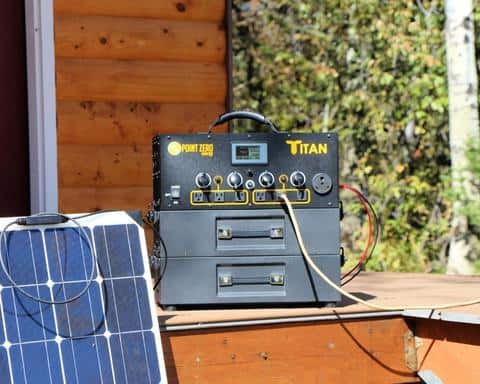Within Goal Zero’s Yeti X lineup is one of the largest solar generators available on the market today – the Yeti 6000X.
Although its port options and LCD layout are similar to other Goal Zero models, the 6000X’s tall frame houses over 6kWh of energy.
The Yeti 6000X is the largest solar generator created by Goal Zero and is twice as large as the company’s second-largest Yeti X series model, the Yeti 3000X. However, the 6000X shares the same 2,000W (3,500W surge) inverter as the smaller 3000X and 1500X models.
| Pros | Cons |
|---|---|
| Massive battery capacity (6,071Wh) | Very heavy (106 lbs) |
| High-powered 12V, USB-C, and AC ports | 600W Max input is low for its battery size |
| Pairs with Goal Zero Yeti App | Average battery lifecycles (500) |
Below is my scoring of the 6000X broken down into eight main categories.
| Category Analyzed | Max’s Score | Comments |
|---|---|---|
| Battery Lifecycles | 5/10 | 500 cycles to 80%+ is an average cycle life |
| Output Port Options | 7/10 | Above-average 12V section, only two AC ports |
| Recharging Times | 4/10 | 600W max input from AC or solar (below average for its size) |
| Unique Features | 7/10 | Goal Zero App, battery expansion |
| Internal Build Quality | 8/10 | 106 lbs is heavy for a “portable” power station, but it’s significantly lighter than similar-sized models |
| External Build Quality | 9/10 | Grippy handle, backlit LCD screen, roll cart for maneuvering |
| Weight & Portability | 8/10 | Besides its massive battery capacity, the Yeti 6000X has the same features as smaller Yeti X models. This impacts its recharging speed significantly. |
| Price/Value | 5/10 | High price for what you get |
| Overall | 53/80 (6.63/10 avg.) | Besides its massive battery capacity, the Yeti 6000X has the exact same features as smaller Yeti X models. This impacts its recharging speed significantly. |
The Yeti 6000X is best for people who want the simplicity of a typical Goal Zero portable power station, but with the most battery power possible. This power station should be kept in one place and is ideal for use with the Yeti App.
This article will discuss the features and benefits of the 6000X power station. We will also examine the drawbacks associated with this solar generator towards the end of the piece and share some alternative models that might be better suited for your needs.
A quick overview of the Goal Zero Yeti 6000X
This power station is the latest product in the line of solar generators from Goal Zero. It packs a battery capacity of 6,071Wh and paired with its powerful inverter, there will rarely be a gadget or appliance that you cannot run with this power station.
The 6000X features a design similar to its smaller variant, the Yeti 3000X. It has a box-like shape, measures 15.3 x 10.1 x 17 inches in size, and weighs 106 lbs. The power station comes with a roll cart and handles for short-distance mobility.
With its huge battery capacity, there is a need for an efficient charging mechanism to fuel the power station. The 6000X makes this possible by providing three different charging methods. These methods include wall, car, and solar charging. Depending on the method you prefer, you will get the solar generator charged within 12 to 38 hours.
Lastly, the immense capacity of the 6000X doesn’t go to waste as it features numerous ports for charging and powering your devices. Prominent among these ports are the two AC outlets (rated at 2,000W continuous) that allow you to power anything you would power with a wall socket.
Yeti 6000X – Features and technical specifications
The following are the features and technical specifications of the 6000X that allow it to perform its functions easily:
- Powerful Battery Capacity
- Lithium-Ion Battery Type
- Multiple Charging Options
- Strong Inverter
- Numerous Ports and Outlets
- WiFi Connectivity and App Control
Nearly all of these features are essential for an evergreen portable power station. Let’s dive into each of the above points so you can get a more wholesome understanding of the 6000X features.
Battery capacity (6,071Wh)

The capacity of a solar generator is one of the most important features to consider in a power station. It determines the running time of appliances that you can power with the power station. Thus, it is important to discuss this feature first.
The 6000X features a 6,071Wh battery. To put this into perspective, the Yeti 6000X will provide your smartphone (with a 12Wh battery) with about 451 full recharges. Likewise, a tablet and laptop with a 30Wh and 50Wh battery will get 201 and 120 full recharges respectively.
A headlamp and a POV camera will get 1,202 full recharges while a DSLR camera will get about 334 full recharges.
It gets better with larger electronics as the 6000X allows you to run a CPAP machine for over 90 hours, a 42-inch LED TV for 60 hours, and a pellet grill for 51 hours.
Heavy-duty appliances such as a full-size refrigerator run for about 110 hours, and a 1,500W circular saw run for four hours. A mini-fridge and a portable camp freezer will also get 172 and 241 hours of runtime respectively. Another heavy-duty appliance you can run is a 1,000W microwave oven, which the power station will power for about six hours.
By any standard, this is a very powerful battery. You could sufficiently and comfortably power your electrical appliances and gadgets for long durations with this amount of juice.
The number of recharges and runtimes stated above is evidence of the capacity of this power station in its real-life application. While you may not need to run all of the appliances mentioned above with the solar generator, it’s an indication that it can comfortably power the average home for hours on end.
Lithium-ion battery type – A Goal Zero standard
Battery technology is another very important aspect of a power station. You want to get a power station with a strong and efficient battery, which is directly influenced by the battery’s chemical makeup.
The 6000X doesn’t disappoint as it uses a lithium-ion (li-ion NMC) battery pack. Lithium-ion batteries are some of the most widely used battery technologies in the industry.
This technology is better than the lead-acid battery and a bit less efficient than the lithium-iron-phosphate (LiFePO4) battery.
Getting ultra-specific on the 6000X’s battery contents, its lithium-ion pack is rated at 6,071Wh, 10.9V, and 556Ah. Its single-cell capacity is measured at 1,668Ah at 3.6V.
The cycle life of the Yeti’s battery is 500 to 80% capacity.
This means that if you use the battery of the power station to its last bar and fully recharge it every day, the battery will last for about 500 days before it reaches 80% of its total 6,071Wh capacity.
On average, this is an acceptable battery cycle life. However, given its lithium-ion construction, one would expect its battery to have a higher number of lifecycles.
Some solar generators that are not as powerful as the Yeti 6000X have batteries with a higher cycle life, ultimately meaning that they will last longer before their maximum battery capacity starts to deplete.
For example, the Point Zero Energy Titan has a lithium-ion battery pack rated at 2,000 cycles to 80% capacity. Plus, you can attach multiple batteries to the Titan.
That being said, if you have a Titan with three batteries, it will last four times longer than the 6000X. This difference extends its longevity to perform for several years past the 6000X when both are used in similar conditions.
The 6000X features multiple charging options
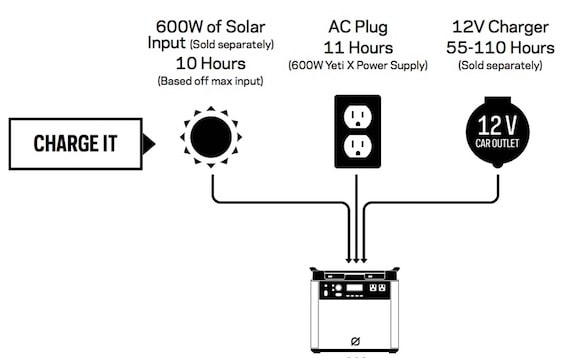
Charging, like the battery capacity and type, is another crucial aspect of a solar generator. Especially for a power station that is as powerful as the 6000X, its charging mechanism must be efficient and fast.
This is exactly what Goal Zero provides with the Yeti 6000X. The power station allows you to charge it through three different mediums. These options include solar charging, wall charging, and car charging through a 12V car port.
If you are conversant with solar generators, you will find that these charging options are similar to almost all solar generators on the market. The only difference that you can expect is the disparity in charging durations.
As the Yeti 6000X is a powerful solar generator with a large battery capacity, one would expect that its charging process would take a considerable amount of time. There are no surprises here as the charging durations are fairly long.
The 6000X will charge in ten hours from solar panels (based on its 600W max input), 11 hours from the included AC wall charger, and 55-110 hours from a 12V car charger (sold separately).
The solar charging duration given is dependent on the type and size of solar panels used to charge the power station. Using two Boulder 200 briefcases (affiliate link), the 6000X will fully charge in about 18-36 hours. This example provides the 6000X with about 320W of solar input after efficiency losses.
Therefore, if you want a shorter time frame for your solar charging option, you should use more solar panels or solar panels with a higher output. Imagine how fast four Boulder 200 solar panels will charge the power station. This is possible because the maximum solar input is 600W from its HPP port.
Using 800W of panels at an average of 80% efficiency means that you’ll get about 640W of output on a clear, sunny day. The MPPT charge controller will be able to factor out the additional 40W of power to keep the input at its 600W max. Plus, if the sky is partly or mostly cloudy, this 800W setup will be ideal, as you’ll still be able to attract a decent amount of solar energy.
On the other hand, the wall charging option is a faster option than solar charging. This option fully charges the 6000X in 11 hours. Goal Zero included a powerful 600W AC charger with the 6000X to allow for fast and efficient AC charging. Although the solar input and AC input are at the same 600W mark, AC charging will be consistent, whereas optimal solar charging has several variables that can alter its output.
The last option is car charging. To utilize this option, you need to use the Goal Zero Yeti Lithium 12V Car Charging Cable (affiliate link). This is the only approved cable for car charging, as the use of another cable may damage the power station.
It would be best to avoid car charging since it takes (at best) 55 hours to fully charge this power station.
The 6000X also uses MPPT charge controller technology to ensure a fast and efficient charging process with the power station for solar and AC charging.
Strong inverter within the Yeti 6000X
The inverter is another vital component of a solar generator that allows it to perform its AC output function. A powerful inverter allows heavy-duty gadgets and appliances to run on the power station’s energy supply without damaging the power station or the appliance.
The 6000X comes with a 2,000W (3,500W surge) inverter. This inverter is shared in both the Yeti 3000X and Yeti 1500X. This is enough power to run a 1,000W microwave for six hours and even a 1,500W circular saw for four hours.
This is a powerful inverter for any power station. Any solar generator with this inverter size can power several types of heavy-duty appliances without worry.
However, it is somewhat disappointing to see that the Yeti 6000X has this inverter size. Many power stations that do not have the same capacity as the 6000X have similar inverter sizes. Thus, it is expected that the power station will come with a bigger inverter.
Yeti 6000X – Ports and outlets
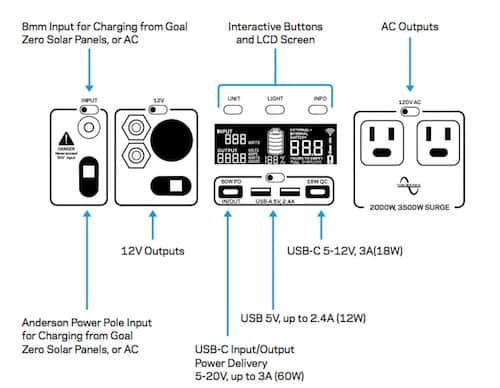
The essence of having a large battery capacity and powerful inverter is the ability to power as many devices and appliances as possible for an extended period of time. The Yeti 6000X gives you this option as it packs twelve ports on its external frame. These ports include both inlets and outlets.
With only two of these ports being inputs for charging, the remaining ten output ports allow you to run as many devices as possible with the power station.
The following are the ports within the Yeti 6000X (source: Goal Zero):
- 2x USB-A (output)
- 1x USB-C (output)
- 1x USB-C PD (input/output)
- 2x 6mm port (output, 6mm)
- 1x 12V car port (output)
- 1x 12V HPP (output)
- 2x 120V AC Outlets (output)
- 2x Charging ports (input, 8mm)
- 1x HPP (input)
- 1x Expansion Module port
The first set of ports are the USB ports, which are four in total. They include two USB Type-A ports, one USB Type-C port, and a USB Type-C PD port. Except for the PD port, which serves as both input and output ports, the USB ports are outlets for charging your smartphones and other gadgets with a USB cable.
Each USB-A port is rated at 5V, 2.4A, with the two USB Type-C ports having a rating of up to 3.0A. The USB Type-A port has a capacity of 12W max, while the Type-C port has a capacity of 18W and the PD port has 60W max.
The next port is the 6mm port rated 12V and up to 10A. It also has an output of 120W max. This port is an outlet, and so is the 12V HPP port that follows it. The HPP port is rated at 12V and up to 30A and has a max output of 360W.
On the right-hand side of the system are the two AC inverter ports, rated at 2,000W continuous. These ports are very powerful and can serve the purpose of your regular AC socket. Thus, whatever your AC socket can power, these AC ports will power them comfortably.
On the left side of the power station, you will find the 8mm charging port for either wall charging or solar charging. This port is rated between 14 and 50V with up to 10A of current. The maximum input capacity for this port is 150W.
Close to the charging port is the HPP charging port. This is the fastest and most preferable port for wall charging. The port shares the same voltage range as the 8mm port but has up to 50A of current allowed. The HPP charging port’s maximum input is 600W, allowing it to charge the power station within 12 hours. The HPP port is where the included 600W AC wall charger will connect.
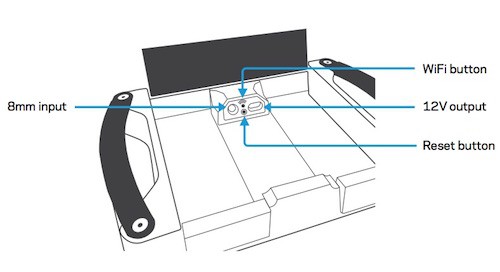
The remaining ports on the 6000X are an 8mm input, 12V output, and expansion module port. You will find these ports located on the top of the power station covered with a lid. You can only use this port with Goal Zero expansion modules or MPPT Modules (affiliate link).
WiFi connectivity and app control
In a similar fashion to some higher-end Goal Zero solar generators, the Yeti 6000X comes with a WiFi connectivity feature. This allows you to use the Yeti App to control and operate your power station remotely.
The Yeti App is an Android and IOS application that you can install on your phone to help you operate the power station from a reasonable distance within the home. The app allows you to enable/disable ports and obtain information about the power station’s performance.
You can carry out these activities as long as you have the app on your phone and in sync with the Yeti 6000X.To get the app, you need to download it from the appropriate app store applicable to your device.
After downloading, you need to sync the app with the power station through the WiFi connection. This gives you the required control of the power station, and you can start operating the Yeti 6000X through the app.
Cost
The cost of the 6000X on amazon.com is $5,999.95 (affiliate link).
Below you can find my YouTube overview of the 6000X, which discusses its attributes in more detail and answers some common questions regarding this power station.
Yeti 6000X – Possible uses
After discussing the features of the 6000X, let us discuss some of the possible uses to which you can put the power station to work.
Partial home backup
The 6000X fits in perfectly as a backup source of electricity for your house. In case of a power outage, you can always rely on the power station to keep your needed appliances and/or electronics running or charged up.
RV living, tailgating, and other outdoor activities
A proper tailgating experience requires electricity. Whether it’s to power speakers, TVs, blenders, or electric cooking appliances, the 6000X will be a reliable source of power that can be used for hours on end before the big game. Since there might be multiple appliances needing the AC outlets, having a power strip may come in handy to plug into one of the Yeti’s AC ports.
Plus, the 6000X’s design is rugged and strong, making it suitable for rough handling and bumps. While the 6000X is far from being a lightweight and easily portable power station, it comes with handles and a roll cart that helps to make it mobile.
Also, the two AC outlets on the body of the solar generator are perfect for RV connectivity. This may be appealing since you can use the power station within your RV while also having the option to wheel it out to any outdoor activities needing off-grid power.
Emergency option in workshops
Away from homes and family life, the 6000X can be utilized in a mechanical workshop as a backup option. Work doesn’t have to stop when there is a power outage in the workshop. The 6000X can power several types of heavy-duty power tools.
However, you need to be careful in this regard and be sure that it is safe to power the tools with the solar generator.
The Yeti 6000X still has some downsides
As impressive as it is, the 6000X is not a perfect power station. There are some features that the solar generator should possess, and the lack of them makes it a bit inadequate.
The first feature is its battery cycle life. Many power stations that have smaller batteries than the 6000X have a much higher number of cycles. Several companies have been able to do this, yet Goal Zero’s cycle life standard for both their Yeti Lithium and Yeti X series is held at 500 cycles to 80% capacity. However, due to the sheer size of the battery, the 6000X will still take a very long time to use its rated battery cycles.
Another downside is the inverter size. The 6000X could have featured a bigger inverter than the 2,000W continuous, 3,500W surge capacity. By increasing this feature, there would be several more applications that people could use this system for.
In Goal Zero’s defense, the 6000X’s inverter is still one of the highest in the solar generator industry, but it falls behind the Bluetti AC200P (2,000W continuous, 4,800W surge), and the Point Zero Energy Titan (with two batteries – 3,000W continuous, 6,000W surge).
In addition, the 6000X shares the same inverter as some of the smaller Yeti X models including the Yeti 3000X and the Yeti 1500X.
The Yeti 6000X’s main misconceived notion

The weight of the power station may seem like a drawback. Although it comes with a roll cart, a power station weighing about 106 lbs is not easy to carry or move around. But this is relatively lightweight for a power station of the 6000X’s stature.
For example, the Yeti 1250 was at one point Goal Zero’s largest solar generator. This was before they created any lithium-ion solar generators. The Yeti 1250 has about 1,250Wh of battery capacity but it weighs 104 lbs! The 6000X weighs nearly the same as the 1250 but has five times the battery capacity.
For example from other companies, the Point Zero Energy Titan and Inergy Flex power stations both have modular designs that allow you to connect several batteries to expand their capacities. If you were to add batteries to each of these systems to get to the 6000X’s 6,000Wh, both the Titan and the Flex would weigh more than the 6000X.
The practicality of using this system outdoors and on the go is not ideal, especially when you can buy a smaller solar generator that can easily power your outdoor needs.
But outdoor use is not the main point of this system. It is clearly for use in your home, RV, camper, or trailer.
Goal Zero already has several smaller portable power stations, so why would they make the massive 6000X? In my opinion, it is for a specific demographic that could use the massive battery and ports for extended use off the grid at a location where it is going to be in one place for the majority of its lifetime.
Goal Zero Yeti 6000X alternatives
There are three alternatives to the Yeti 6000X that I recommend checking out:
1. Bluetti EP500
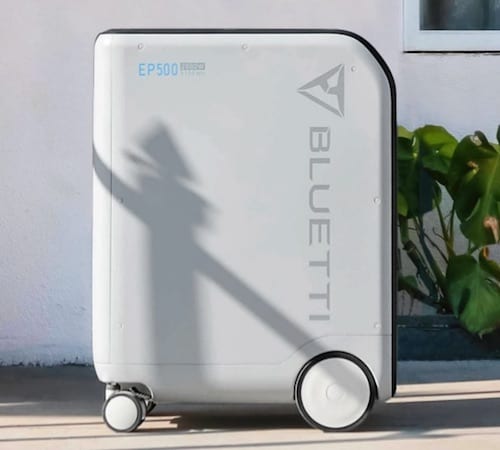
The EP500 has a 5,100Wh battery, which is about 1,000Wh smaller than the 6000X; however, it can handle double the solar input, at 1,200W maximum. This will give you much faster recharging times so you can use the power station more often.
Similar to Goal Zero’s model, the EP500 can be paired with the Bluetti app and be used over WiFi.
Lastly, the EP500 costs much less than the 6000X. Currently, it’s priced at $4,599, which is $1,400 cheaper than the Goal Zero competitor.
You can check out more details of the EP500 in my review post here: Bluetti EP500 & EP500Pro Review – Longest-Lasting Solar Generators.
2. Point Zero Energy Titan
The Titan has a few advantages over the Yeti 6000X, including:
- More output port options – 6x AC ports, 4x 12V car outputs, and up to 8x USB outputs
- Faster charging speeds – Up to 2,000W of solar input (over 3x higher than the 6000X)
- Longer battery cycle life – 2,000 battery lifecycles (to 80% capacity)
To get to a similar battery size as the Yeti, the ideal configuration would be to get a standard Titan with two additional batteries (three batteries total). Since each battery has 2,000Wh, you’ll have a 6,000Wh setup.
You can look into the details of the Titan in my review of it found here: Titan Solar Generator Review – The Best Large Solar Generator?
3. Bluetti AC300 + 2x B300
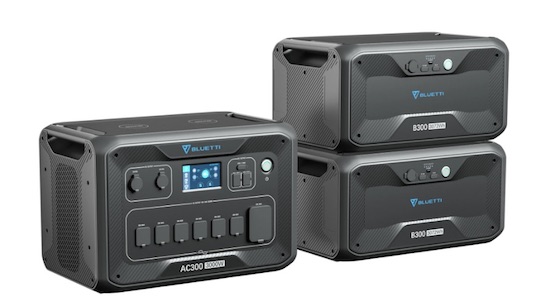
This power station has some impressive features in terms of charging and discharging.
- It carries a 3,000W (continuous) AC inverter with a 6,000W surge maximum.
- It can be charged with up to 2,400W of solar input.
- It can be dual-charged using solar panels and AC charging, totaling a maximum of 5,400W of power.
In addition to these qualities, the B300 battery has a LiFePO4 cell structure, giving it 3,500 lifecycles (7x higher than the Yeti 6000X).
You can find more details of the AC300 + 2x B300 power station here on Bluetti’s website.
Final thoughts
The Yeti 6000X is a massive unit. This is the largest solar generator on the market in terms of single-battery systems. The Titan and Inergy Flex can have multiple batteries attached to their systems, making them capable of a higher battery capacity than the 6000X. However, the 6000X is an all-in-one monster from Goal Zero.
This is ideally for backup power for your home and should stay in one place for a long duration – unless you want to lift it around like a bodybuilder!
Aside from everything else, this power station is built for a specific customer. The ideal customer for this product is someone who wants a secure backup system for their home or RV. It can be used for other less common off-grid needs as well, such as on a boat or while tailgating.
It’s a one-stop shop for a system that has the same simple setup and power control of a smaller Yeti Lithium or X-series model – but has more than twice the power of Goal Zero’s second most powerful set of models, the 3000 Lithium and 3000X.
You can find the Yeti 6000X on Amazon here for additional details and reviews.
How much does a Yeti 6000X weigh?
A Yeti 6000X weighs 106 pounds and has 6,071Wh of capacity. It’s considerably light compared to other portable power stations of the same size. For example, the Bluetti EP500 weighs 167 pounds, yet it houses a smaller battery.
The Point Zero Energy Titan is another solar generator that can expand its battery capacity to 6,000+ watt-hours. At this size (Titan with three batteries), the Titan weighs 137 pounds, which is 31 pounds heavier than the Yeti 6000X.
How do you charge a Yeti 6000X?
A Yeti 6000X charges via three methods: car charging, solar panel charging, or AC wall charging. Wall and solar charging are its fastest charging methods, each capable of 600W of input from its HPP port. However, the 6000X can only be charged via one input source at a time.
This power station comes with a 600W AC charger for wall charging. Solar panels and car chargers are sold separately.



